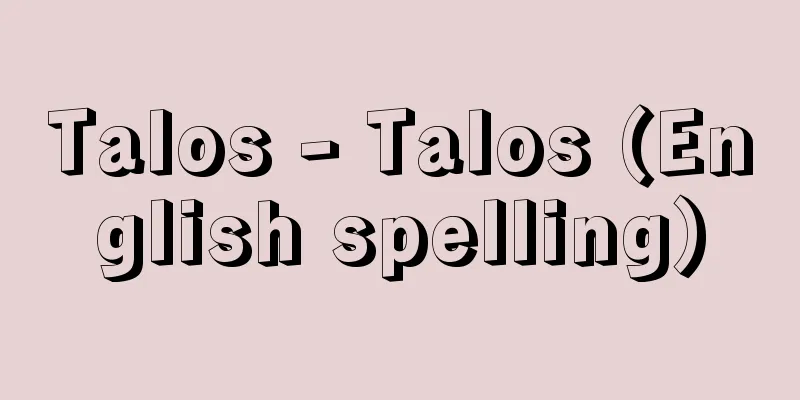Reification - Versachlichung (English spelling) German

|
A term used to describe the phenomenon in which the social relations formed by humans and the subjects who participate in them emerge as if they were objects through a certain mechanism. In general, what is called Verdinglichung (German) or reification can be roughly divided into the following three levels. (1) The objectification of human beings themselves. This refers to situations in which humans are treated as commodities or as part of a mechanical system. (2) The objectification of human behavior. In these situations, human actions are seen as objects in the sense that they cannot be controlled by individuals, such as the flow of people that is beyond the control of the free will of individuals, the movement of people in groups, and the habitual fixation of behavioral patterns. (3) The objectification of human abilities. Examples of this include works of art, which are considered to be the materialization of the human spirit, and commodity value in the labor theory of value. In Capital, K. Marx addressed the phenomenon of the misinterpretation of the communal relationship between humans as if it were the nature of things, or the misinterpretation of the communal relationship between humans as if it were the relationship between things. The relationship between humans is a cooperative relationship in human object activities, and refers to a situation in which this relationship is, through a certain refraction, assumed to be the nature of things or the relationship between things. Marx's theory of reification seeks to grasp why and how such a situation arises as a law of history. [Nitagai Kamon] "The Structure of the Theory of Reification" by Hiromatsu Wataru (1983, Iwanami Shoten) " "Das Kapital" by K. Marx, translated by Kosaka Itsuro (Iwanami Bunko)" [References] | | |Source: Shogakukan Encyclopedia Nipponica About Encyclopedia Nipponica Information | Legend |
|
人間の形成する社会関係およびそこに参与する主体が、ある一定のメカニズムを介してあたかもモノのように立ち現れてくる現象を表す用語。一般に、物化Verdinglichung(ドイツ語)ないし物象化とよばれているものは、およそ次の三つのレベルに整理できる。 (1)人間そのものの物化。これは人間が奴隷商品とか機械体系の一部として繰り込まれているような事態をさす。(2)人間行動の物化。諸個人の自由意志ではどうにもできなくなっている人の流れとか、群集化された人の動きとか、行動様式の習慣的固定化のように、自己の行動が個々の人間ではコントロールできないという意味で物とみられる。(3)人間の能力の物化。人間の精神を物的に定在化させたものとして考えられている芸術作品や、投下労働価値説でいう商品価値などがこれにあたる。 K・マルクスは『資本論』において、人間と人間の共同的関係が物の性質のように倒錯視されたり、人間と人間との共同的な関係が物と物との関係であるかのように倒錯視される現象を問題にした。人間と人間の関係といっても、それは人間的対象活動における協労関係であり、それがある屈折を経て物の性質や物と物との関係であるかのように仮現する事態をさす。このような事態がなぜ、またはいかにして生ずるかについてを歴史の法則性として把握するのがマルクスの物象化論である。 [似田貝香門] 『廣松渉著『物象化論の構図』(1983・岩波書店)』▽『K・マルクス著、向坂逸郎訳『資本論』(岩波文庫)』 [参照項目] | | |出典 小学館 日本大百科全書(ニッポニカ)日本大百科全書(ニッポニカ)について 情報 | 凡例 |
<<: Subrogation - Butsujoudaii
Recommend
Kaigen - Kaigen
Year of death: Bunmei 1.4.21? (1469.6.1) Year of b...
Stefan Permskii
Around 1345-96 A missionary and saint of the Russi...
iminourea
...It is also called iminourea or carbamidine. It...
Conic section
A general term for the plane curves of the cut su...
Wang Nensun - Wang Nensun
A Chinese scholar in the mid-Qing dynasty. His pe...
Edo's Two Great Festivals - Edoni Daimatsuri
...After 1681 (Tenwa 1), the Sanno Festival came ...
Holothuria leucospilota (English spelling) Holothurialeucospilota
… [Minoru Imajima]. … *Some of the terminology th...
Hero family - Eiyuuke
〘 noun 〙 A family of the highest rank, second only...
Damselfly (Damselfly) - Damselfly
A general term for insects in the Agrionidae famil...
Bored - Aki
In psychology, this is called "mental satura...
Sarrusophone (English spelling)
A type of wind instrument. It is made of a double ...
Einstein equation
In general relativity, space-time is considered to...
Chemical Medicine - Kagakute Kiigakuha
...However, it is certain that he was the origina...
Ohozaki ayame - Ohozaki ayame
…It is a perennial plant of the Costus genus of t...
Kalialaiset
...From here, they spread eastward and northward,...









